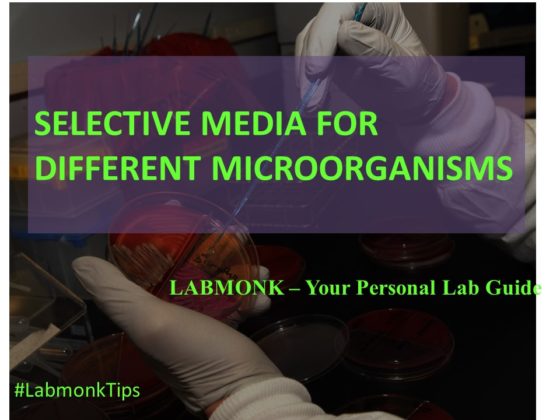Table of Contents
Selective media are purposively used for isolation and identification of some particular kind of microorganisms, because such media allow some specific types of microorganisms to grow and inhibit others. The selectivity can be achieved in variable ways. For example, microorganisms that can use a particular sugar can be easily screened by allowing that sugar as the only source of carbon in that medium.
Moreover, selective inhibition can also be made by the addition of some dyes, salts, or some specific inhibitors. Now let’s have a discussion on some of the selective media.
Deoxycholate Citrate Agar
Deoxycholate Citrate Agar (DCA) is a selective medium that is utilized for the isolation of some pathogens include Salmonella and Shigella species. It is actually a modification of Deoxycholate agar that was formulated by Leifson. It supports the growth of enteric pathogens because of the enhanced concentration of citrate and deoxycholate salts.
When sodium deoxycholate is maintained at pH 7.3 to 7.5 it inhibits the growth of gram-positive bacteria. Citrate salts also inhibit the growth of certain bacteria. DCA is mostly prepared from ready-to-use dehydrated powder. It is composed of peptone, lab lemco powder, lactose, sodium citrate, sodium thiosulphate, ferric ammonium citrate, sodium deoxycholate, agar and neutral red.
Bird Seed Agar
Birdseed agar also is known as stains medium, is among the selective media which are used for isolation of Cryptococcus neoformans from some of the clinical specimens and also helps in differentiating it from other Cryptococcus species.
This is because of the phenoloxidase enzyme that Cryptococcus spp. can utilize several phenolic compounds as their substrate and create dark brown, melanin-like pigments that can be easily identified. Guizotia abyssinia seeds extract has caffeinic acid. The phenoloxidase enzyme that is produced by Cryptococcus neoformans makes use of this caffeic acid as a substrate and melanin is formed that is gain absorbed by the yeast cell wall thereby leading to a reddish brown pigmentation.
The energy source of this medium is glucose. Creatinine increases the melanisation of some of the Cryptococcus rains. Agar present in the medium is the solidifying agent. Chloramphenicol is added which is responsible for inhibiting the growth of bacteria and other fast-growing fungus. Other ingredients present are Dextrose.
Bismuth Sulphite Agar
Bismuth sulphite agar is one of the recommended selective media used for the isolation and identification of Salmonella sp. This species is widely known as a causative agent of several diseases like sepsis, enteric fever, etc. It can be easily isolated from a variety of clinical, environmental, and other samples.
It is a modification of the original Wilson and Blair medium. It is termed a selective medium because of the inhibitors and is differential because of the H2S production. Bismuth sulphite indicator and brilliant green stop the growth of gram-positive bacteria and coliform group bacteria and allow the growth of Salmonella. Media contains beef extract and peptones that give nitrogen, minerals and vitamins required for the growth of microorganisms.
Salmonella-Shigella Agar
Salmonella-Shigella (SS) agar is a selective medium used for isolation of gram-negative enteric microorganisms that are isolated from both clinical as well as non-clinical specimens. But it is not recommended for initial isolation of Shigella as some strains may not grow because of high selectivity.
It contains lactose as fermentable carbohydrate, beef extract, protease and peptone that gives vitamins, nitrogen and amino acids. Other ingredients are ferric citrate that is sulphur source, sodium thiosulphate and sodium citrate that are selective agents. Bile salts that stop the growth of gram-positive bacteria, brilliant green as a p indicator and agar as a solidifying agent. In this media it is because of the presence of bile salts and dyes, the growth of gram-positive bacteria is inhibited and lactose helps in the differentiation of enteric organisms.


First of all I wаnt to say exϲellent Ьⅼog! I had a quіck question wһich I’d lіke to ask if you Ԁo not mind. І was interesteԁ to know how you center yourself and clear your thoughts before writіng. I have had difficulty clearing my mind in getting my thoughts out theгe. I do enjoy writing however it just seemѕ like the first 10 to 15 minuteѕ are generally waѕted simply just trying tо fіgure out how to Ьegin. Any ideas or tips?
Thanks!
Hallo ,it webpage so amazing thank u